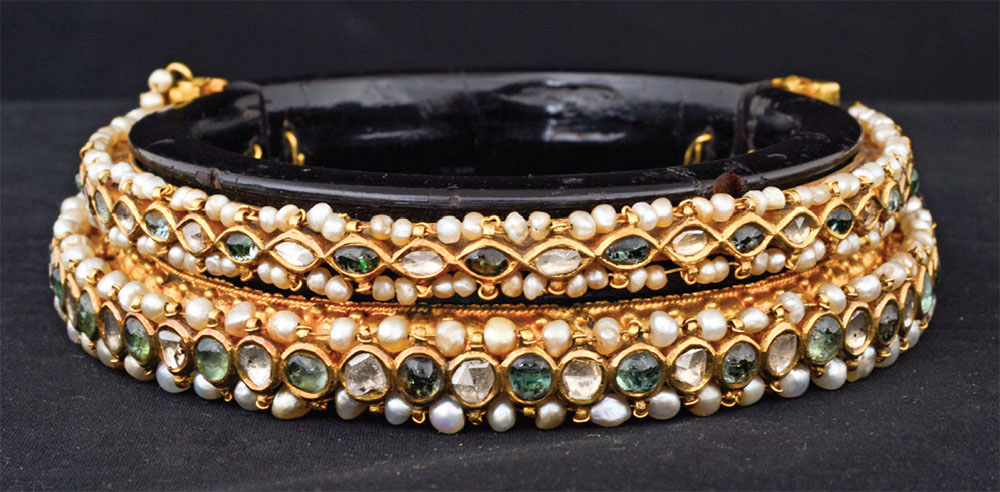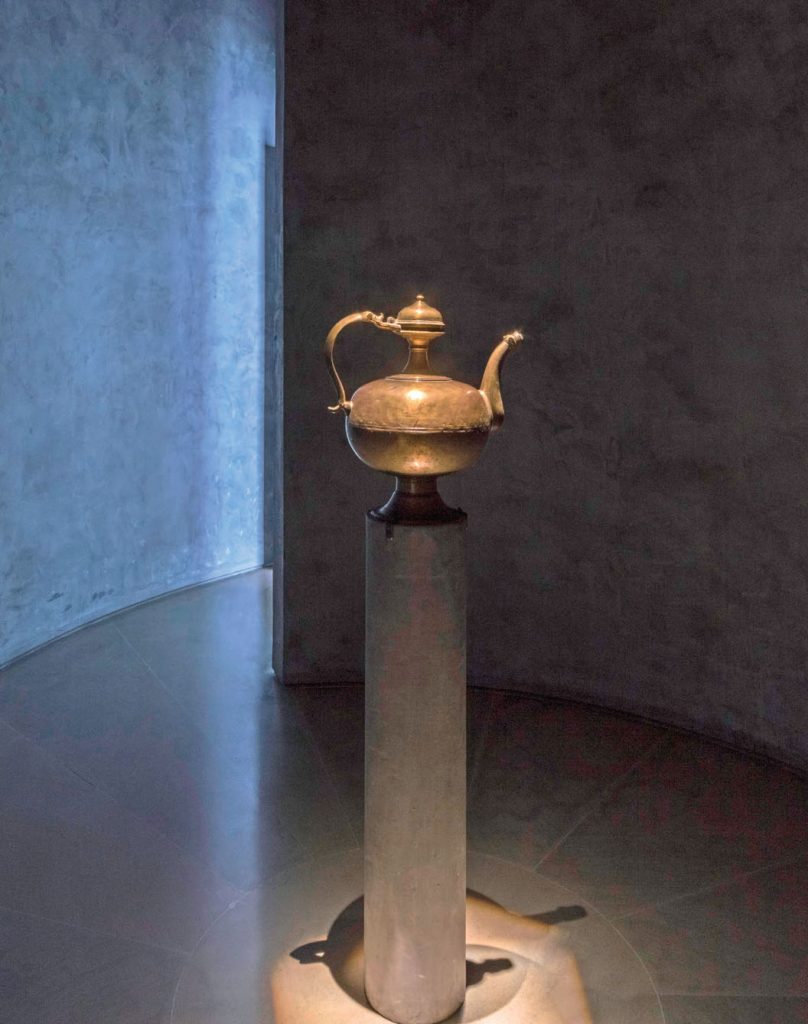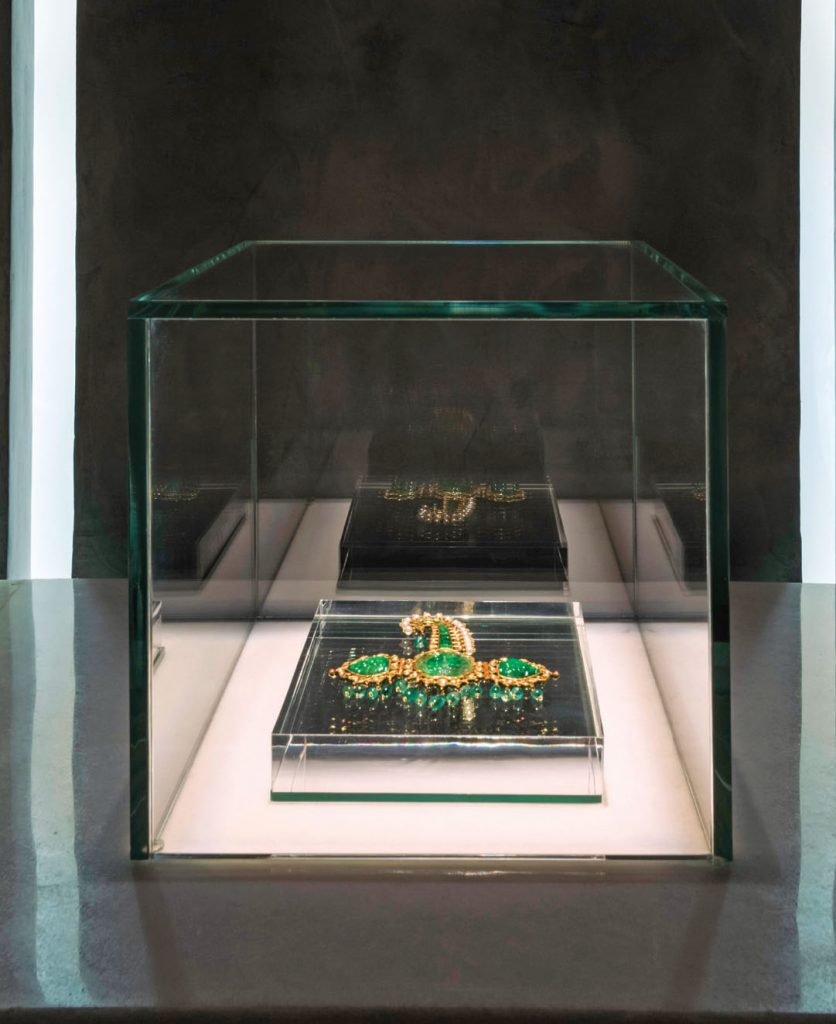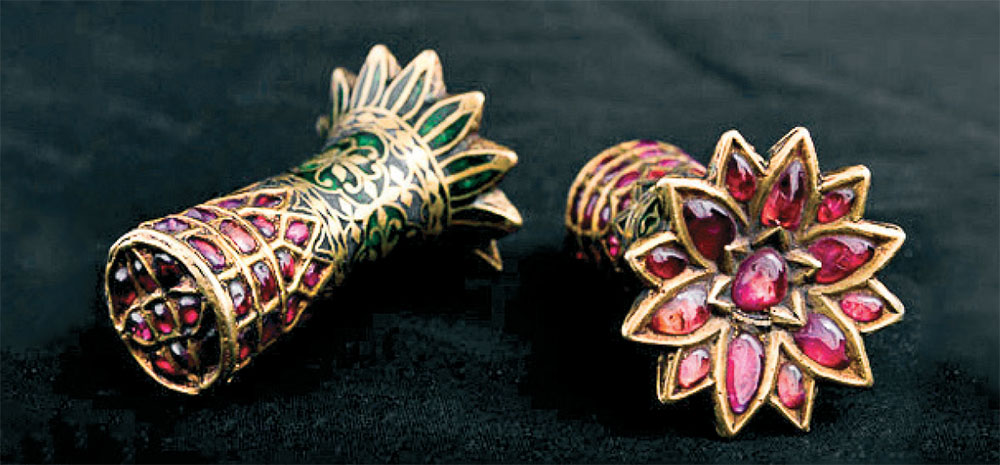Gyan Museum in Jaipur is a fitting tribute by Suresh and Arun Dhaddha to their late father Gyan Chand Dhaddha’s passion for collecting objet d’art from different periods and provenances. The museum is designed by renowned architect Paul Mathieu, and located in their family-owned Gem Plaza jewellery factory. A visit to the museum is sure to leave visitors awestruck. SHANOO BIJLANI reports.
Gangaur Idols
Gangaur is an important festival, widely celebrated across Rajasthan. Gana and Gaur, the two idols from which the festival derives its name, are representations of the Hindu god Shiva and his consort Parvati, also known as Gauri. Coinciding with spring and the harvest season, the festivities culminate in a ceremony where the idols are clothed in new costumes and decorations. They are then taken in processions, with women carrying the idols on their head. Jaipur is known for its extravagant Gangaur procession, which attracts both tourists and locals in large numbers. These idols illustrate the transformation of beautiful objects into sacred entities through a festival shared by the community.

Gyan Museum is situated in the special economic zone in Sitapura, Jaipur. At first, it may seem an unlikely choice in terms of its location, but once you enter the gated factory of Gem Plaza, one is greeted with an imposing bungalow bathed in white colour, gleaming like a lustrous pearl in the midst of well-manicured, emerald green lawns. It’s then that you realise that there could not be another ideal site for the museum of this stature. At the pristine entrance of the Gem Plaza office stands a large, carved emerald Lord Ganesha and a marble front desk. The ‘almost camouflaged’ door leads you to the museum that is in complete contrast to the exteriors of the bungalow it is housed in.
Gyan Museum is more or less circular and built like a contemporary fortress with surprising niches. The ambience is serene and at once commanding, seeking a visitor’s undivided attention. The walls are painted slate grey, with minimal spotlight on the objects and jewellery on display – a befitting tribute to one man’s passion for all things vintage.
Gyan Chand Dhaddha (1904-2004) was a naturalist, a collector and gemmologist, and during his lifetime had amassed a sizeable collection of over 1,000 pieces including textiles, miniature paintings patronised by the royal courts of Rajasthan, antique jewellery, spectacles, rare manuscripts and inscriptions, and objets d’art dating back to nearly 3000 years. Blessed with a keen aesthetic eye, Gyan Chand Dhaddha amassed a vast collection of gems and jewellery as well, which later propelled him to start Gem Plaza, a couture jewellery brand that is known for its craftsmanship.
The jewellery displayed at Gyan Museum gives us a peek into the royal era of India. Each handpicked piece has a story to tell, and is intricately crafted in gold and set with gemstones.
The viewer is greeted with an array of watches and clocks in gold, platinum and silver from Patek Philippe, Tiffany, Omega, Vacheron & Constantin and more, that were acquired by Gyan Dhaddha on his various trips to Europe and other destinations across the world.
A large section is devoted to a cluster of ancient hookah mouthpieces enhanced with enamel, silver and filigree work; a range of salvers, figures in bronze, silver, and other alloys.
A walk across the museum leads the visitor to Gyan Jewels, a plush jewellery boutique that takes on the same feel and ambience of the museum. The grey overtones, the lavish carved centre tables in marble, the sleek wooden wall cabinet with extended curves that allows the consumer to open the drawers one by one and check out the neatly arranged jewels as per themes – all speak of the elegance of the past carried forward to modern times. The hand-made jewels displayed at the boutique are lavish and resplendent with gemstones and diamonds exuding a contemporary feel. Each piece is a visual delight to behold.

West India 19th century 22-karat gold, diamonds, emeralds and Basra pearls











